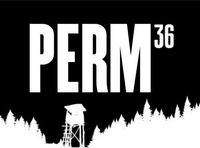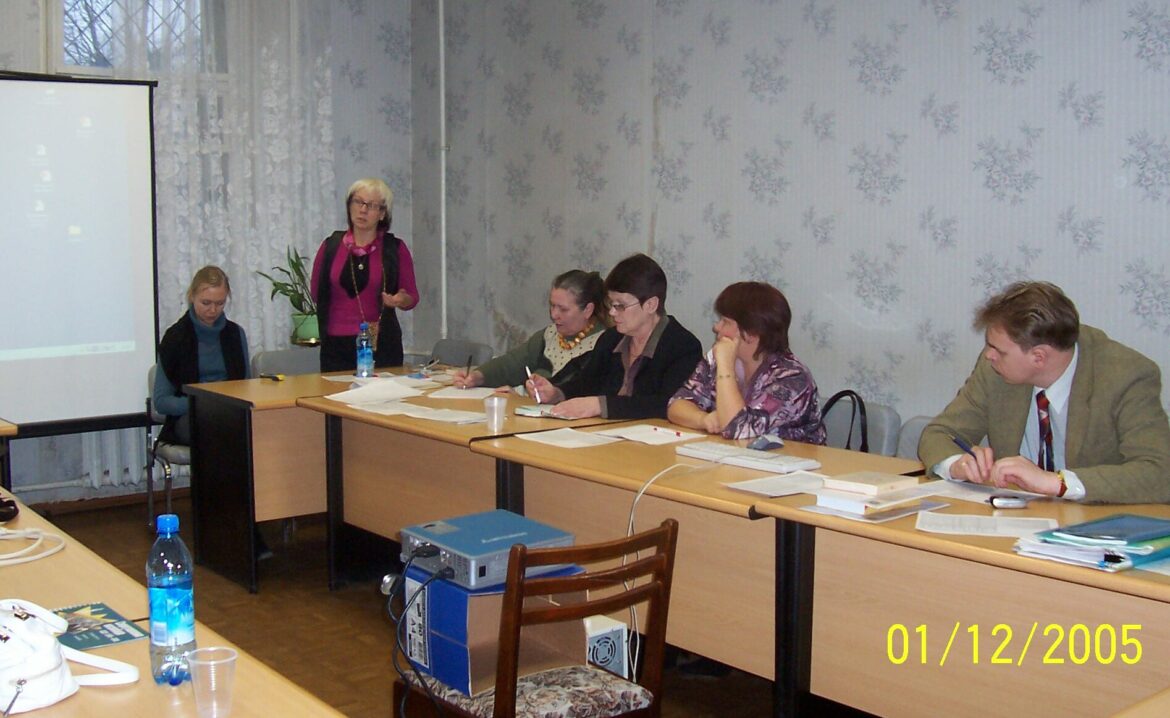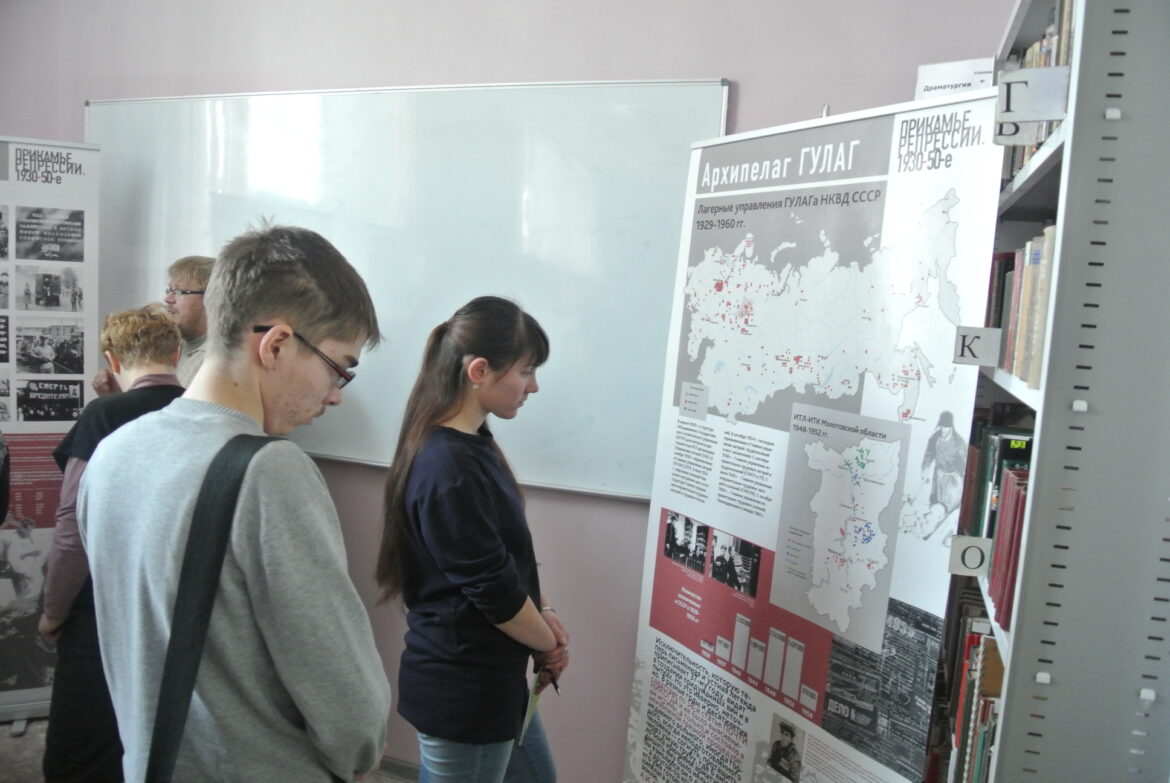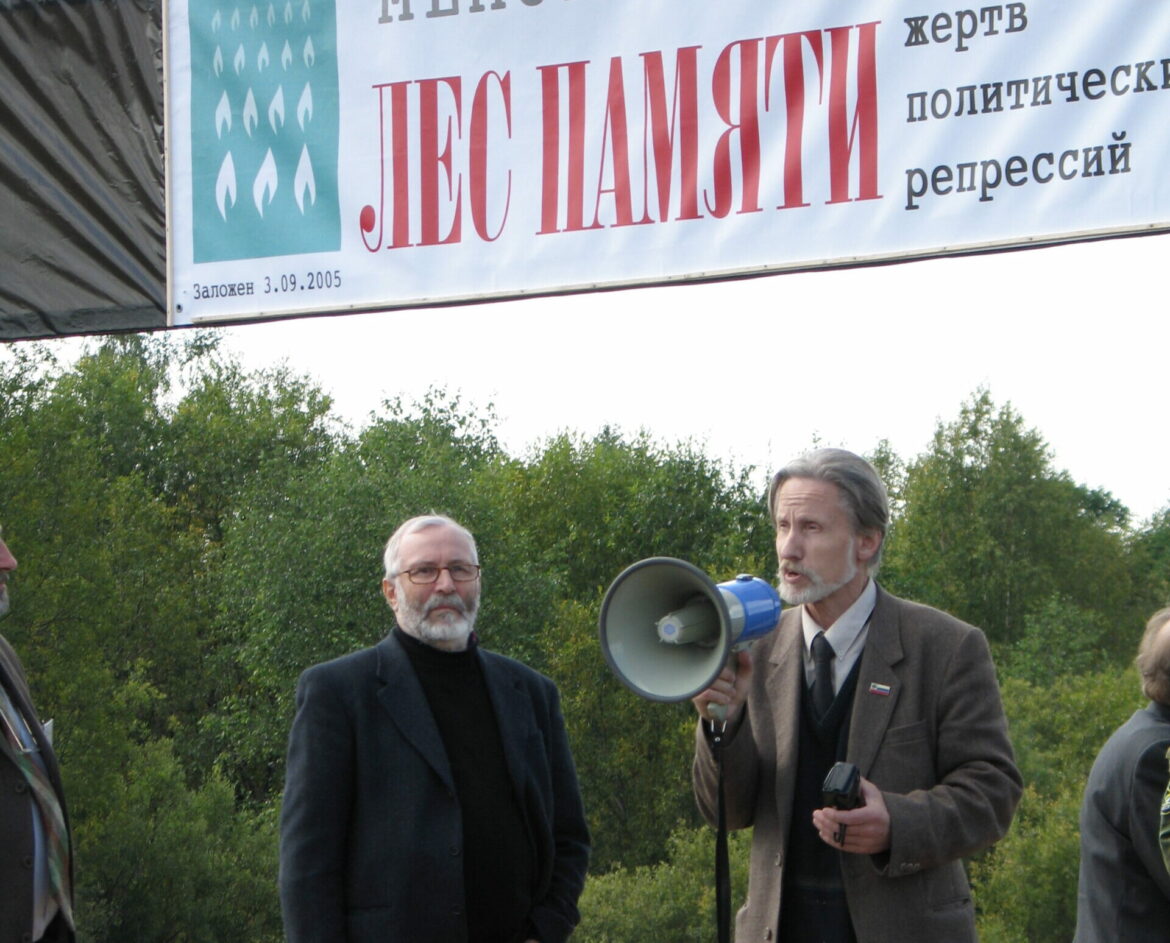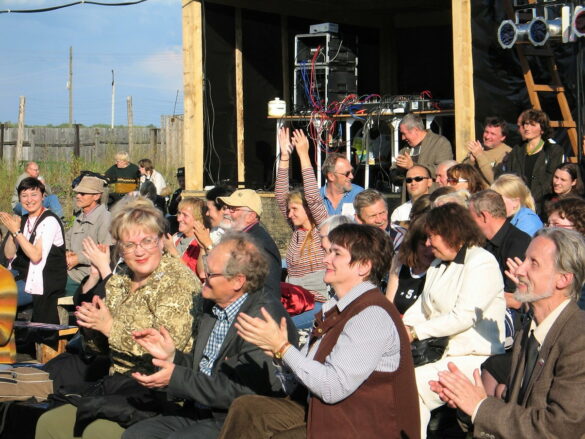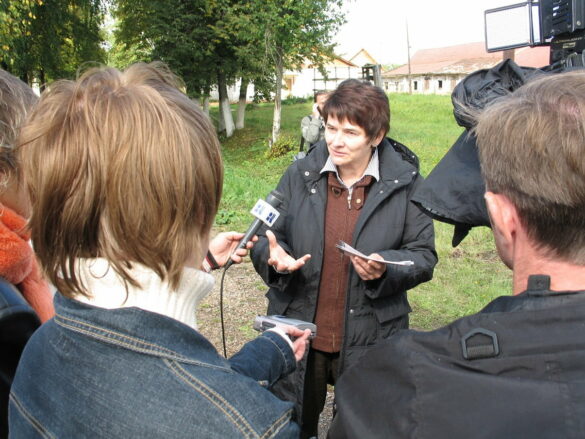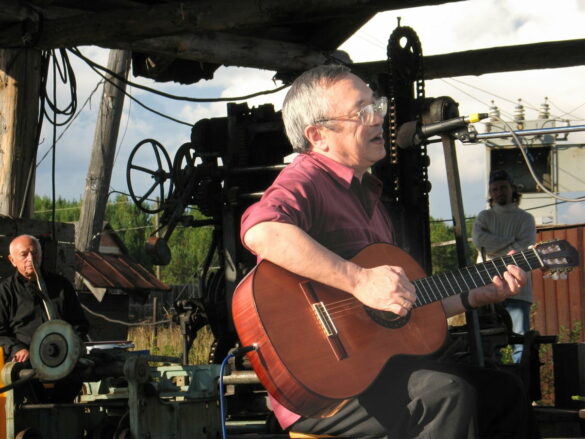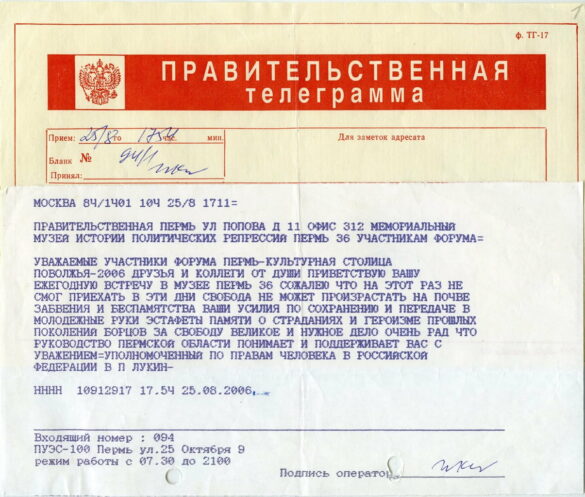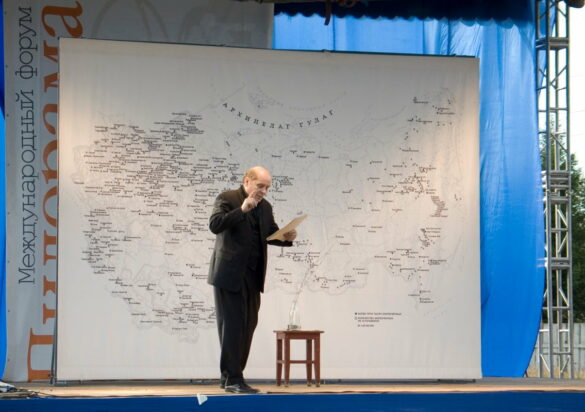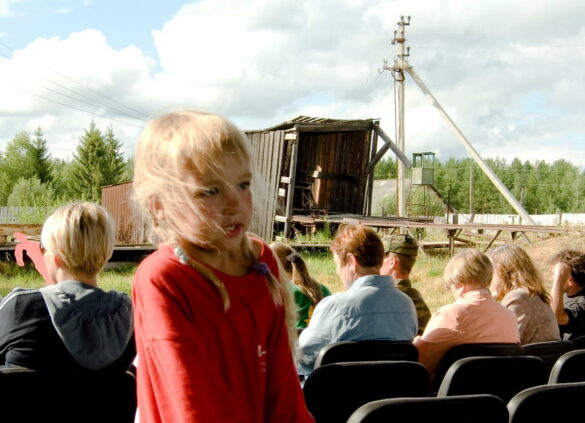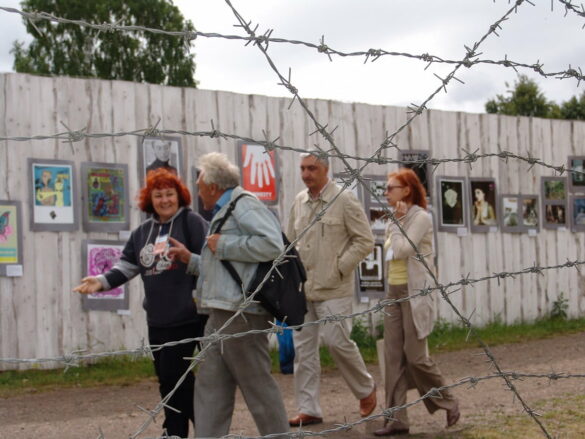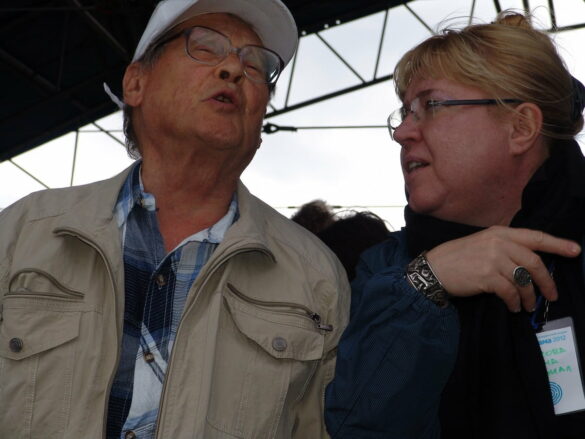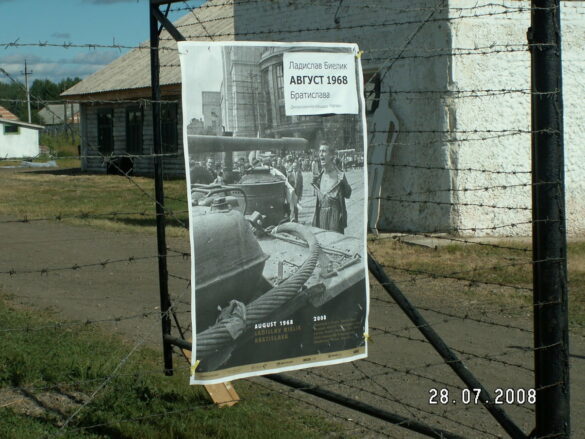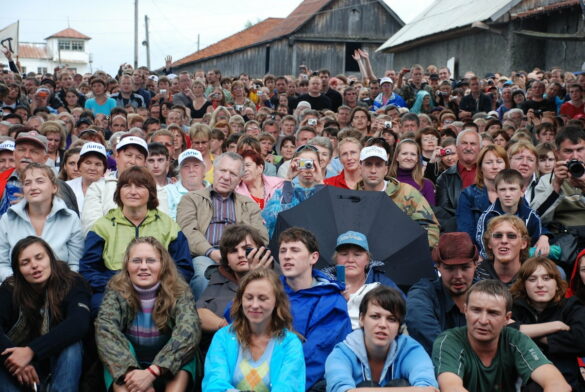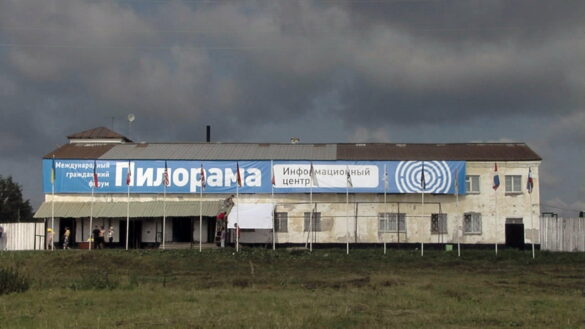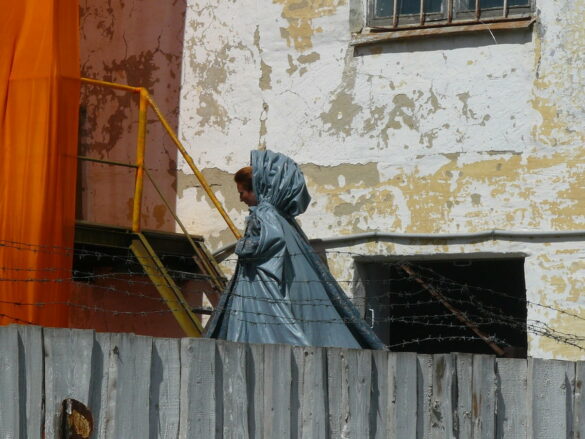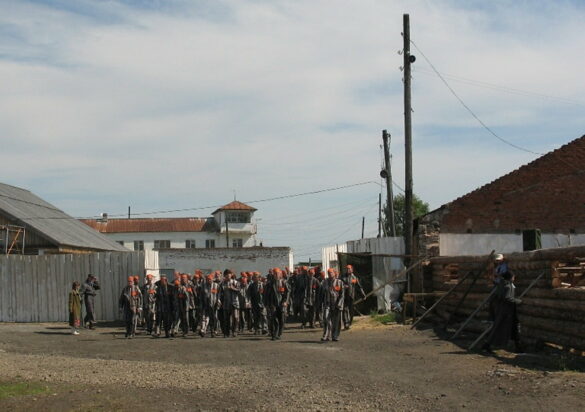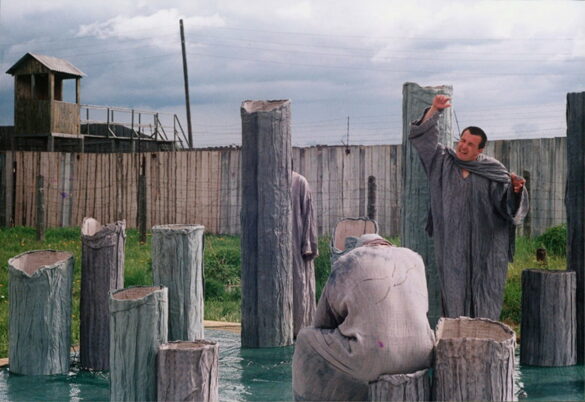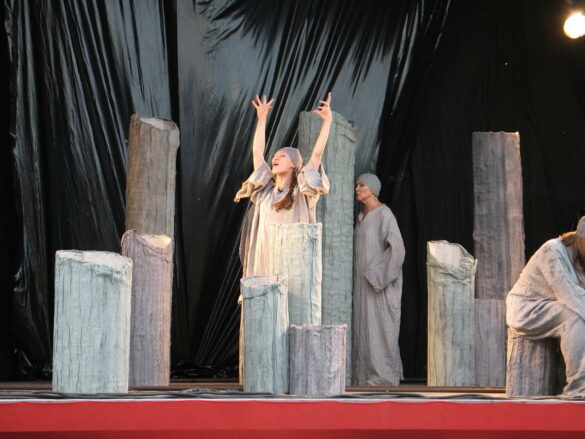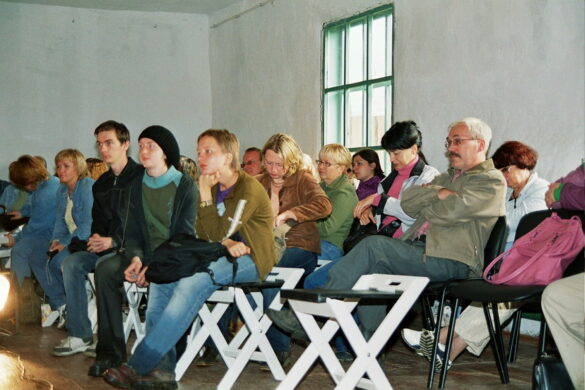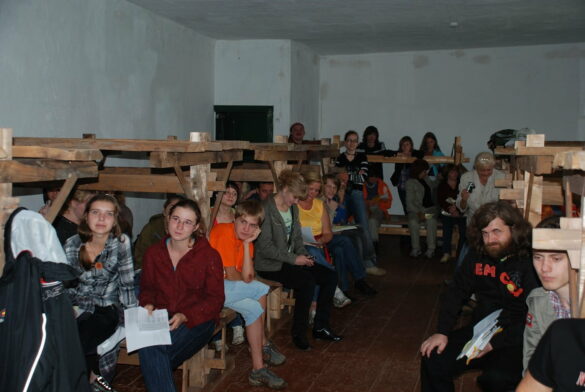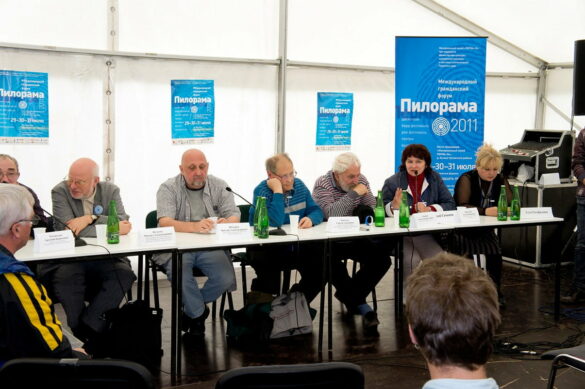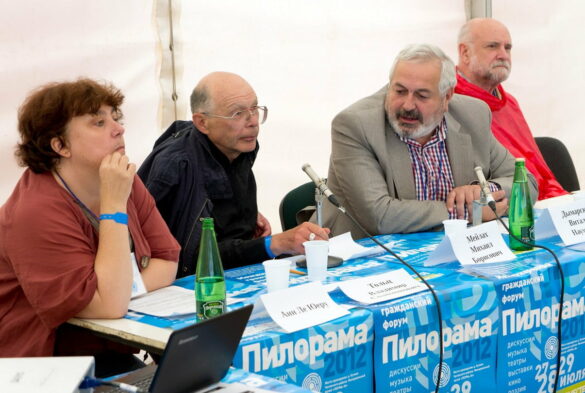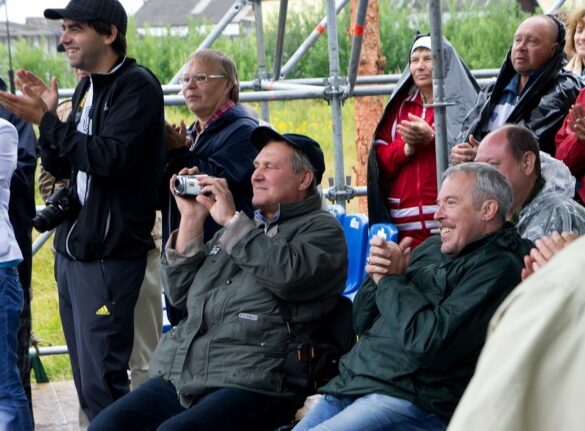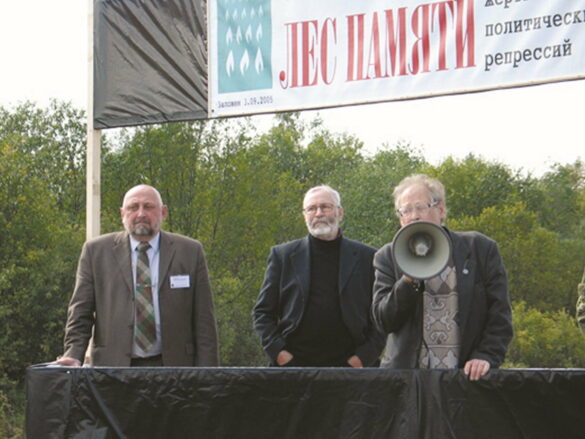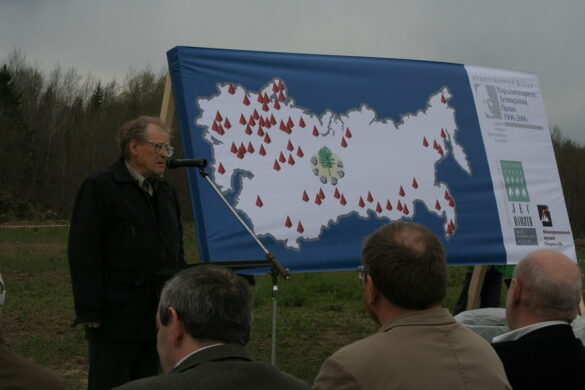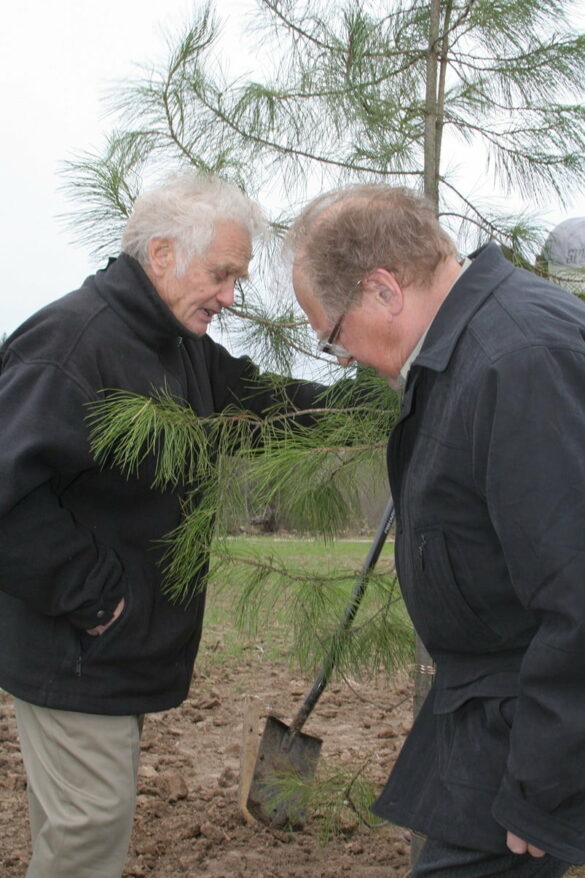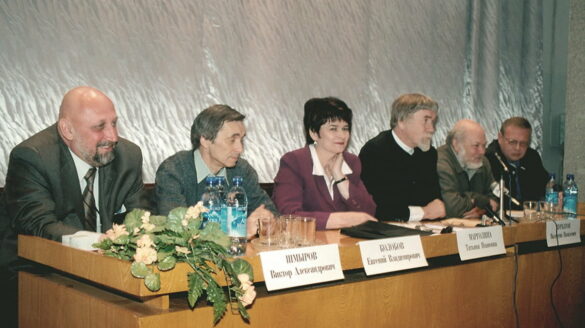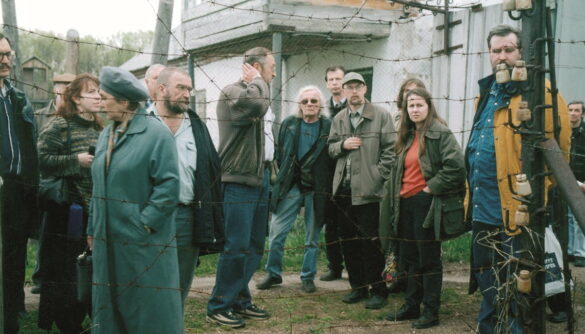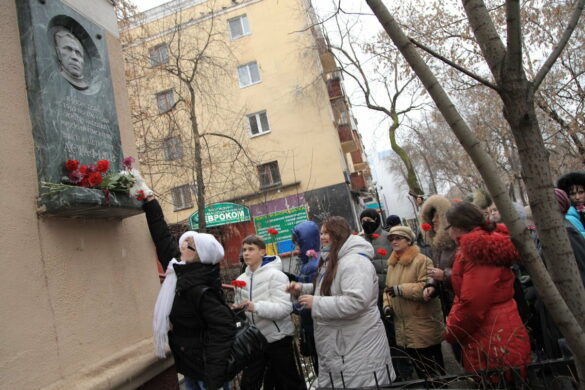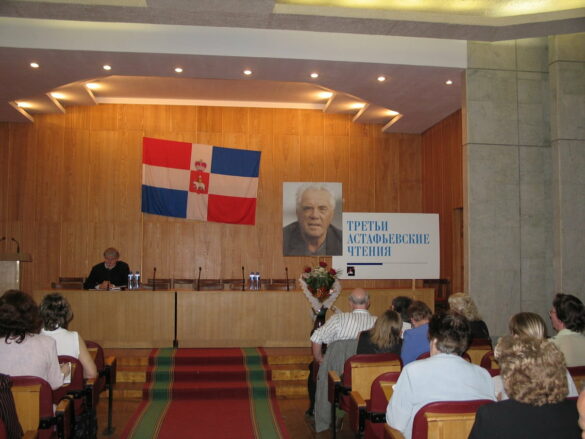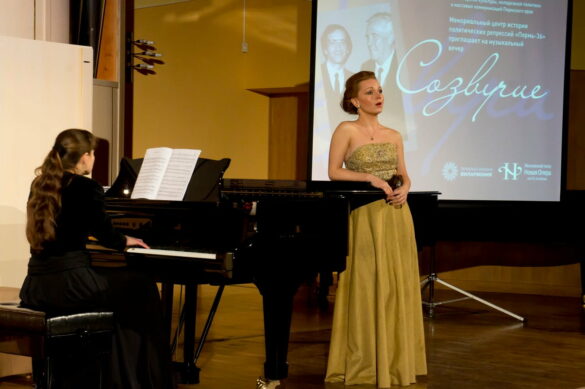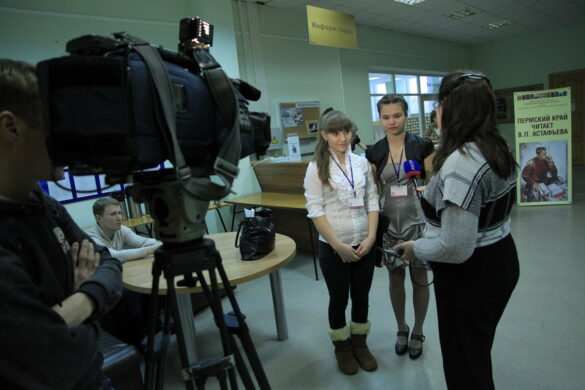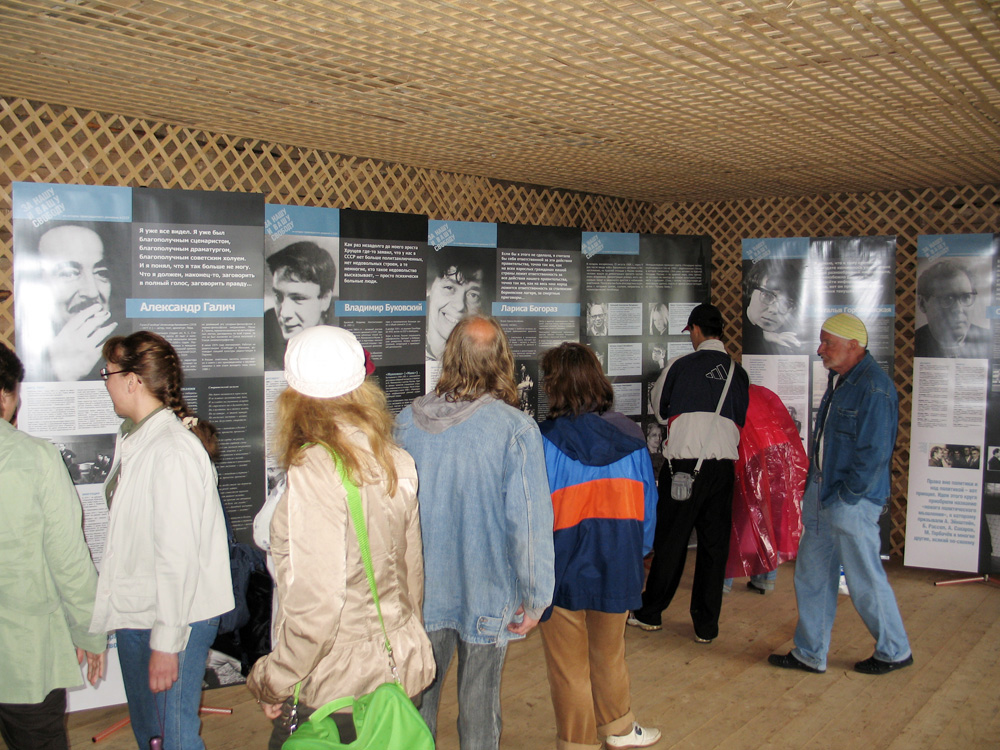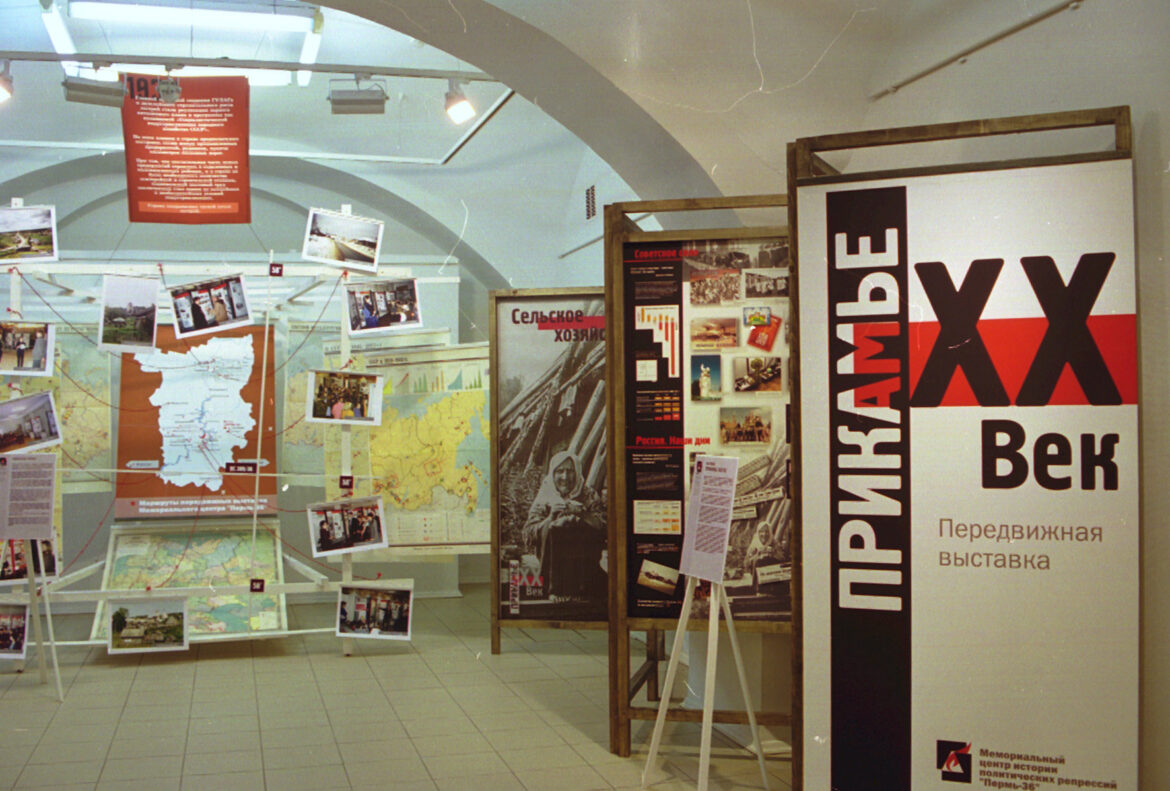The School of Museology appeared in the museum virtually at the same time as the teachers’ workshops. It comprised two components: a two-week summer School of Museology for the Russian Museum Network of the International Coalition of Historic Sites of Conscience and a course of weeklong workshops for museum staffs of Perm Territory.
The Summer School of Museology was headed by Mikhail Gnedovsky, the founder of the Laboratory of Novel Museum Design, the director of the Institute of Cultural Policy, an expert at the Council of Europe, a juror at the ‘Best European Museum of the Year’ Contest, and had leading historians and museum workers form both Russia and abroad for lecturers and experts. Seven project which were started as the school participants’ individual projects, won the contest by Vladimir Potanin’s fund, ‘A Changing Museum in a Changing World’.
Weeklong workshops for museum staff which were started to familiarize municipal museum staff with the best contemporary museum practices, evolved into joint inter-museum projects. In 2010 to 2011, researchers from five museums of the region and from Perm-36 Memorial Museum worked on the ‘Vishera Correctional Camp’ project; as a result, the ‘Vishlag: The Vishera Correctional Camp (1925 through 1934)’ fixed exhibition was set up jointly in 2012 in Perm-36 Memorial Museum.
That same year, the School of Museology started a new joint project, ‘The Civil War in the Urals’, and planned further work on the ‘Vishera Correctional Camp’ project to set up thematic exhibitions in the cities where divisions of this camp existed but the work was interrupted by repression against the Memorial Museum.
HISTORY OF THE MUSEUM
Workshops on history of USSR for humanitarian teachers and lecturers
Weeklong workshops for humanitarian teachers and lecturers came to be held in the museum itself after the building of the former camp’s headquarters which was previously used by the psychoneurological care home was handed over to the museum in 2007. The museum used this building to equip classrooms and boarding rooms which could accommodate as many as 25 workshop participants at a time.
Long-term workshop plans and programs were published in the museum’s site. Workshop participants were selected by analyzing their questionnaires. Everyday work comprised lecture courses, training sessions and individual design work. In the end of a workshop, all participants defended their individual or joint auteur projects.
The classes were given by leading specialists: historians and methodologists from Perm Territory and the Russian Federation. The entire project was headed by Irina Karatsuba, the associate professor at Moscow State University and the Higher School of Economics, a text-write in XX-cent. Russian history.
The ‘History of Totalitarianism’ professional skills contest among teachers of history stemmed from the early practice of tutorial workshops for humanitarian teachers. The contest was held by the museum, Perm Regional Institute of Further Training of Educators and the Institute of Continuous Education for Perm National Research University.
In the course of the tutorial workshops, declared contestants developed auteur lessons and guidelines thereto and implemented these in their own practice under guidance of specialists from the Institute of Further Training and the Institute of Continuous Education. Auteur demo lessons were attended by specialists from these institutes, no matter how far the schools were from Perm. All demo lessons were captured on videos which were then viewed by the contest jury.
The contest winners received formal awards which were taken into consideration when classifying the teachers, and their developments recommended to participants of future workshops.
The ‘Lessons of History in the GULAG Museum’ project began soon after the museum was formally opened, by the research staff of Perm-36 Memorial Center taking documents and materials from the museum’s holdings to high schools and colleges in the region’s cities. It made grade when first the mobile exhibition service and established, then the showroom.
Next, the museum and the Institute of Continuous Education for Perm National Research University developed programs of workshops for teachers of history which involved leading specialists: teachers and historians both from Perm Territory and from Russia, including text-writers. The museum partnered with the Faculty of Philosophy of the University of Jena (FRG) which had wide similar experience of working with schools, the faculty’s staff and postgraduate students participating in the workshops on a regular basis.
Later on, the museum developed elective course on individual topics of Russian history, and published students’ learning aids and teachers’ guidelines.
The mobile exhibition service of Perm-36 Memorial Museum had several mobile thematic exhibitions, audiovisual equipment sets, collections of newsreels, documentaries, docudramas and slideshows on the XX-cent. Russian history.
The museum staff went out on regular expeditions, traveling all over Perm Territory and reaching the remotest villages where there had been no cultural activity for many years.
They rolled out two or three exhibitions in village clubs and high schools, gave excursions around the exhibitions, held classes on the ‘Lessons of History in the GULAG Museum’, discussions and outreach meetings, displayed slideshows and films, lectured while also interviewing in the course of the ‘Oral History’ program, collecting materials and exhibits.
The expeditions involved the lawyers from the Regional Board of Rehabilitation of Victims of Illegal Political Repression who gave advice to repression victims and their relatives.
‘The mobile exhibition service’ photo gallery
AN uncompleted project of Perm-36 Memorial Center of History of Political repression ANPO
The ‘Memorial and the Forest of Memory of Victims of Political Repression’ project
AN uncompleted project of Perm-36 Memorial Center of History of Political repression ANPO
The Memorial of Victims of Political Repression was to be a four-hectare outdoor range map of USSR situated between the high-security division and the maximum-security division of the former Perm-36 camp, including commemorative tokens in the sites of the more than 400 GULAG camps. GULAG camps were technically not individual camp sites, camp divisions, separate camp facilities, and ‘stints’ but agglomerations thereof which often included tens of camp sites which came to be known as camps or correctional facilities in the 1960s through 1980s, as well as political camp sites of the 1960s through 1980s.
The map was to be bordered by shrubbery, the camp sites marked with stones brought from actual camp administration sites and engraved with information including the camp name, the prisoner number, and the number of those who died while imprisoned. The center of the Memorial was to be marked with a bell as a monument of the victims of political repression in USSR near which commemorative rites of the country’s major denominations could be held. One of the project consultants who offered the most interesting and practicable solutions for the commemorative stones and the central monument was Ernst Neizvestny, a sculptor.
The Memorial of Victims of Political Repression was to form the center, with alleys of the Forest of Memory of Victims of Political Repression lined with trees planted to commemorate individual victims of political repression fanning out from it. The Memorial Park was referred to as a ‘Forest’ because of the vast number of victims of political repression who would have been personified by commemorative trees.
A tree could have been planted in the commemorative forest to commemorate anyone whose death resulted from political repression in USSR: who was shot, died in a camp or in exile, gone missing in the Bolshevist bloodbath, irrespectively of the region where the repression occurred, or of there the victim died or was gone missing.
The first alley of the Forest of Memory of Victims of Political Repression, the Alley of Mourning was laid on September 3rd, 2005, on the tenth anniversary of Perm-36 Memorial Museum of History of Political Repression.
The site of the target Memorial of Victims of Political Repression was cleared of forest and willow thickets, and landscaped after the reclamation by participants of Ural-Service labor camps and volunteer camps of the Perm Memorial. This area was to be laid down with lawn grass in 2014 and seeds had already been purchased to that end but the new authorities put an end to this project by taking over the museum during that year. The landscaped site got covered with wild shrub and willows again.
Perm-36 Memorial Museum developed its first program shortly after it was formally opened. Right after the first excursions for senior pupils, it became clear that even the best pupils in the best schools have extremely sparse knowledge of the governmental terror, political repression and GULAG. The museum therefore designed a special excursion series for pupils, and made a practice of the museum staff making systematic trips to schools of the region which were further on transformed into a permanent mobile exhibition service.
In 1999, a showroom was equipped in the museum where classes for pupils and tutorial workshops for teachers on the ‘Lessons of History in the GULAG Museum’ program were held. The methodological workshop in XX-cent. Russian history developed by the museum was held first on the premises of Perm Regional Institute of Further Training of Educators, then, when the museum managed equip classrooms and boarding rooms for learners on its own premises, right in the museum. At the same time, the School of Museology got into action as well as recurring workshops on history for humanitarian teachers which evolved into the School of Historians.
Projects such as the Civil Readings in Memory of V.P. Astafyev, the Pilorama International Civil Forum, ‘The World Classics in National Sites of Commemoration’, ‘The Art Residence’, et alias were targeted to the broader audience of the museum.
The ‘Vishlag: The Vishera Correctional Camp (1925 through 1934)’ fixed exhibition was an exhibitional project by the School of Museology affiliated with Perm-36 Memorial Museum, it also involved I.F. Konovalov Berezniki Museum of Local History, Solikamsk Local Lore Museum, A.S. Pushkin Cherdyn Local Lore Museum, Krasnovishersk Local Lore Museum, the museum of Azot concern (Berezniki).
The exhibition is dedicated to establishment and history of the first Soviet correctional camp in today’s Perm Territory, the Vishera camp division of Solovki Special Camp (SLON) which was converted to Vishera Special Camp (VISHLON) in 1929, and to Vishera Correctional Camp (Vishera CF of VISHLAG) in 1930. The exhibitional booths described rollout of thee GULAG system and camp super-exploitation of the prisoners.
It was presented at the Sawmill International Civil Forum of Perm-36 Memorial Museum in 2012. The project provided for thematic exhibitions on history of VISHLAG divisions in museums of Krasnovishersk, Cherdyn, Solikamsk, Berezniki and Krasnokamsk in 2013 through 2014 but subsequent takeover of Perm-36 Memorial Museum ruined these plans.
Presentation of the ‘Vishlag: Vishera Correctional Camp (1925 through 1934)’ exhibition
Vishera Correctional Camp
‘For Your and Our Freedom!’ was a jubilee both mobile exhibition dedicated to the 40th anniversary of human rights movement in USSR, it was presented in 2008. Over a number of years, it was displayed at various sites in Perm and other cities of Perm Territory.
The ‘For Your and Our Freedom!’ exhibition
The ‘Lessons of History in the GULAG Museum’ thematic exhibition was prepared by Yuri Reshetnikov on proposal from the State Central Museum of Contemporary History of Russia (the former Museum of the Revolution), and displayed in three halls of the museum’s main building (ul. Tverskaya 21, Moscow) in August, 2003 though September, 2003. The exhibition of dedicated to educational experience of Perm-36 Memorial Museum. The exhibition comprised workshops for methodological associations of Moscow teachers of history.
Photo of the exhibition
